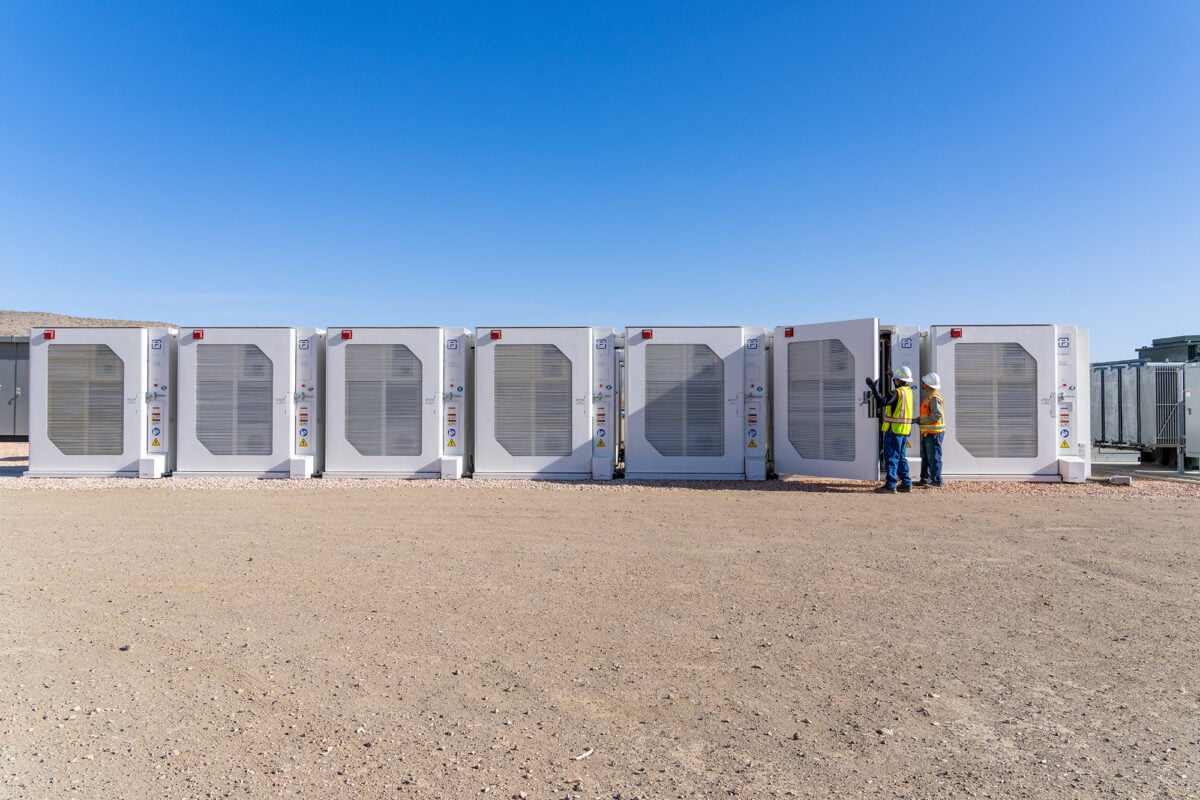
Its GAAP profit margin improved to 10.3% from 4.4% the prior year, its net loss fell to US$12.9 million from US$37.4 million, while its adjusted EBITDA loss fell to US$6.1 million from US$27.7 million. The backlog has remained the same quarter-on-quarter at US$3.7 billion.
The company reaffirmed full-year guidance of US$2.7-3.3 billion and US$50-80 million in adjusted EBITDA (its financial year runs to 30 September).
It may be noteworthy that fellow system integrator Wärtsila also reported a fall in revenues in the period which it attributed to the timing of projects, describing it as a ‘periodisation of revenues’.
New energy-dense product
During the quarter Fluence began offering customers a new generation of its Gridstack grid-scale BESS platform, the Gridstack Pro 5000, with an improved energy density. It has 5MWh of energy in a 20-foot enclosure bringing it in line with many other BESS products in the market.
Energy density has grown in importance as deployments grow and available plots of land become smaller and closer to populations. China-based companies have led the way in increasing energy densities to 5MWh per container, and higher, and Western system integrators like Fluence, Powin and Wärtsila have in turn responded with their own high energy density offering.
US module production and domestic content deal
Like others Fluence is positioning itself to take advantage of tax credit incentives under the US’ Inflation Reduction Act which subsidise domestic battery cell production and downstream clean energy projects using domestic content.
This includes tying up with contract manufacturing facility to assemble its BESS products in Utah in 2022 but also designing and manufacturing its own battery modules in the US.
It said this will enable its products to meet the domestic content criteria incentives for downstream projects, making it one of the first to be able to do so, and that it has already signed a domestic content contract that will benefit from those incentives.
However, as Energy-Storage.news wrote recently, battery cell production is where the biggest incentives are and many are sceptical of the ability to qualify for domestic content without a US-made cell.
Major project announcements in calendar year 2024 include new projects in the Netherlands, the UK and Australia and the commissioning of a project in Taiwan, totalling over 1GWh in combined capacity.
Energy-Storage.news’ publisher Solar Media will host the 1st Energy Storage Summit Australia, on 21-22 May 2024 in Sydney, NSW. Featuring a packed programme of panels, presentations and fireside chats from industry leaders focusing on accelerating the market for energy storage across the country. For more information, go to the website.
Energy-Storage.news’ publisher Solar Media will host the 2nd Energy Storage Summit Asia, 9-10 July 2024 in Singapore. The event will help give clarity on this nascent, yet quickly growing market, bringing together a community of credible independent generators, policymakers, banks, funds, off-takers and technology providers. For more information, go to the website.


